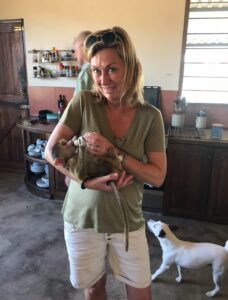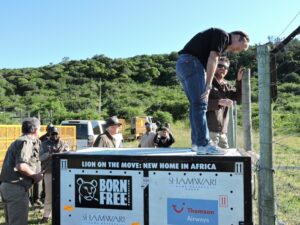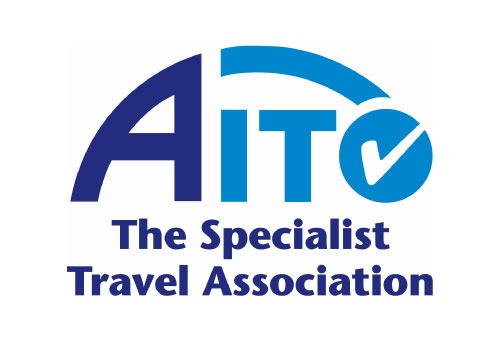As a luxury travel agent, I often find myself curating extraordinary experiences for my clients—off-the-beaten-path adventures, unforgettable wildlife encounters and opportunities to explore the natural world.
But my passion for safari conservation and animal welfare runs far deeper than just organising trips. It’s rooted in my own journey, one that started with a simple visit to a safari park and has grown into a lifelong commitment to protecting the wildlife that so deeply moved me.
The Moment I Became Aware
It all started when my son was a toddler and we visited a safari park in the south of England.
I still vividly remember walking through an area where a transparent bridge stretched overhead.
Above me I saw a black leopard pacing relentlessly back and forth. Its head hung low, and it seemed utterly disengaged from the world around it appeared trapped in a cycle of stress and confusion.
I stood there, frozen, deeply disturbed by the sight. I realized that this animal was terribly mentally ill, a shadow of what it should be.
It was a painful reminder of how often wildlife is kept in captivity, far from the freedom it deserves.
That moment sparked a deep awareness of the need for better treatment of animals and, ultimately, the preservation of their natural habitats.
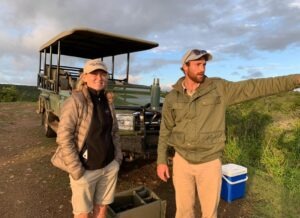
A Transformative Safari
Fast forward a few years to my 40th birthday, when I embarked on my first safari to Kruger National Park in South Africa.
I had no idea what to expect—no clear idea of what to wear, what to eat or what wildlife encounters lay ahead.
What I found out was that I was about to step into a completely different world. The smells, the sounds, and the vast, untamed landscapes were like nothing I had ever experienced.
But what truly left me in awe was watching the animals—lions, elephants, buffaloes and more—interact with one another in their natural habitat.
Seeing them hunt, rest and play was a revelation. It was nothing like the staged environments and restrictions of zoos and safari parks.
Meeting True Conservationists
In 2012, I met a woman who would change my conservation journey.
I met her in the south of France, where she was meant to be on holiday but had been so traumatised about seeing lions being used to advertise a circus that she had decided to do something.
She had successfully persuaded the local government to stop the horrific practice of transporting live lions in tiny cages on the back of lorries in scorching temperatures as an advertising tool.
Her unwavering dedication to animal welfare was truly inspiring.
Within months of meeting her, my husband was flying with 2 rescued circus lions from Eastern Europe to South Africa, where they would find sanctuary at the Born Free Foundation’s Big Cat Sanctuary in Shamwari Game Reserve.
The flight was an emotional one—the lions were terrified, but the relief on their faces when they were finally released into a protected environment was heartwarming.
The sight of them cautiously stepping out of their crates, smelling the African air for the first time and finally experiencing a life as close as possible to freedom, made me realise how incredibly important it is to support organisations that give these animals a second chance at life. Learn about their story in this video
Revisiting the Rescued Lions

Jora and Black
That experience led us back to Shamwari the following year, where we met Jora and Black, the two circus lions who had been rescued and rehabilitated.
Their transformation was nothing short of remarkable. They had gained weight, their manes were full and luxuriant, and their roars could be heard echoing across the reserve.
These lions were back in their native Africa, living as close as possible to the way they were meant to, and it was an honour to witness their recovery.
But Shamwari also introduced me to the harsh realities faced by so many animals in captivity.
One of the most heartbreaking stories was that of a lion cub named King, who had been kept illegally in a Parisian apartment.
He had been beaten and starved, but with time and care at Shamwari, King began to heal.
Another touching visit was to the Shamwari Animal Hospital, where I met an orphaned baby elephant who had suffered both physically and emotionally.
Without its mother, the young elephant had become withdrawn and was at risk of not surviving, and so a decision was made to introduce a sheep as a companion.
They became inseparable—playing, dust bathing and resting together as the elephant slowly recovered, both physically and mentally.
The bond between these two animals was a testament to the incredible resilience of wildlife, and it cemented my commitment to supporting conservation efforts.
Rhino Protection and the Fight Against Poaching
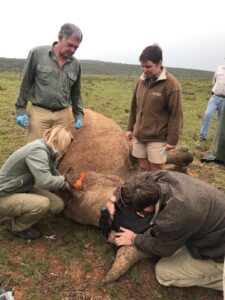
My experiences also led me to witness firsthand the extraordinary efforts made to protect endangered species like rhinos.
On one visit I accompanied a veterinary team as they tracked a rhino to insert a tracker in its horn to protect it from poachers.
The operation involved precise darting, helicopter coordination, and a quick, highly professional team effort to ensure the rhino would be safe once the procedure was completed.
They actually used a Black and Decker Drill to insert the tracker!
Rhino sized ear plugs and a giant eye mask were used to help the rhino relax during such a stressful procedure.
It was an intense, adrenaline-fueled experience that highlighted the urgent need for such conservation initiatives.
Tracking Wild Dogs and Releasing Orphaned Elephants
And then there was the unforgettable day I spent in Zambia’s Kafue National Park tracking the elusive wild “painted” dog.
These animals sometimes communicate through smells rather than sounds, and after hours of searching, we finally found the pack of 20 —an incredible sight that reinforced how lucky I was to witness such precious and rare creatures.
Later, I visited the Elephant Orphanage Project near Lusaka, where I travelled with two orphaned elephants across Zambia to an Elephant Release site where they would take their first steps into the wild.
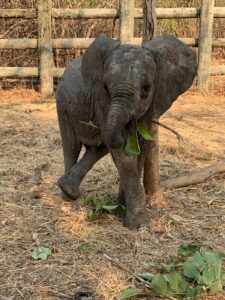
The journey to Kafue was filled with unexpected challenges and heart stopping drama, including the lorry, transporting the orphans, tipping over and a rescue having to be instigated
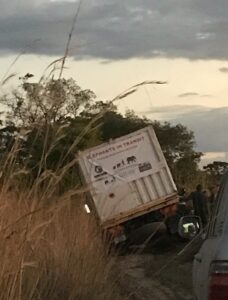
But the sight of the babies being introduced to their new herd, who were also all orphans, was worth every obstacle.
The Matriarch of the orphaned herd appeared, and our two babies stood there trembling as they were inspected. The dust at the orphanage was red, and the dust at their new home was grey –so the two red baby elephants stood out amongst the herd of grey ones and we could see vividly the whole process of being greeted and assessed.
One of the babies was told off by a male for not showing respect – if she hadn’t been an orphan, she would have known that you present your hind quarters to those higher in the hierarchy as a sign of respect and deference.
These moments—these stories—remind me every day why I love Africa and keep returning.
Conclusion
As a luxury travel agent, I believe that travel should be about more than just personal enjoyment—it should also be about having a positive impact.
Whether it’s supporting ethical wildlife sanctuaries, championing responsible tourism, or simply raising awareness, conservation is at the heart of my travel philosophy.
My journey from that first encounter with a panther, to my experiences with rescued animals and endangered species has shaped who I am today.
It’s not just about witnessing wildlife; it’s about protecting it so that future generations can experience it too.
How to Make Your Safari Meaningful
If you’re as passionate about wildlife and conservation as I am, I’d be delighted to help a kindred spirit plan their safari.
With my conservation connections and firsthand experience, I can help you incorporate meaningful conservation work into your journey.
Your trip can be more than just observing these incredible animals—it can also contribute to their protection and the preservation of their habitats.
Whether it’s participating in rhino tracking, visiting a wildlife rehabilitation centre or supporting local conservation projects, I’ll help you create a safari that leaves a positive impact on the places you visit.
And, just like me, these could be the first of many trips that deepen your love for Africa and its wildlife.
If you’d like to explore how to make your safari truly extraordinary by adding a conservation dimension, I’d love to hear from you.
Let’s talk through your passions and ideas to craft a journey that’s as meaningful as it is unforgettable.
Simply email me at janey@berrytravel.co.uk or call 01372 677999, and we’ll begin planning your adventure.
